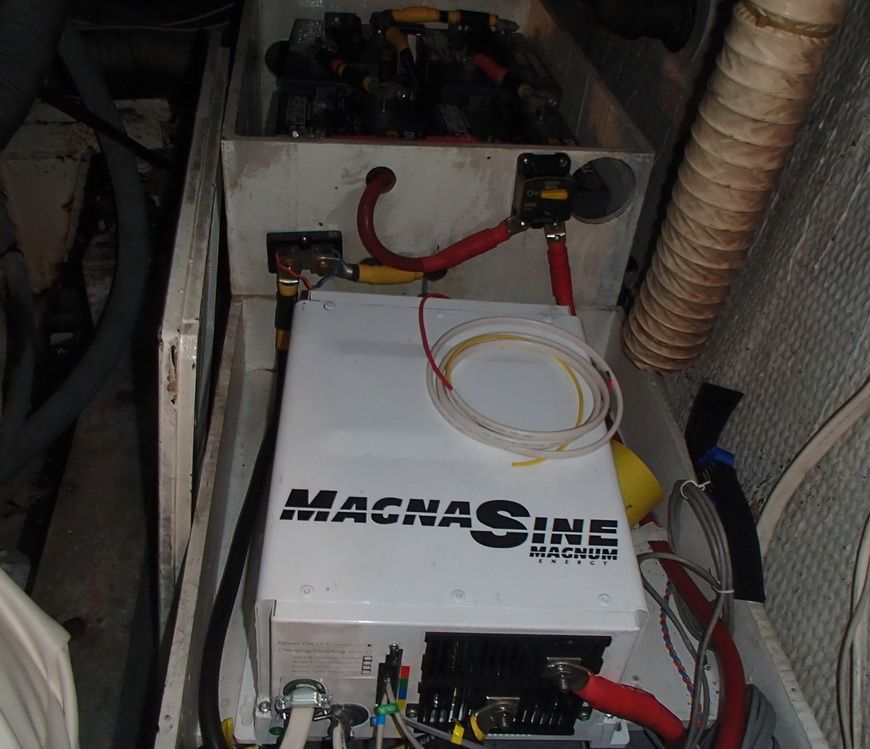Vincentc
Legendary Member
- Joined
- Jun 3, 2008
- Messages
- 1,514
- Status
- OWNER - I own a Hatteras Yacht
- Hatteras Model
- 43' DOUBLE CABIN (1970 - 1984)
I am trying to complete the installation of a Magnum 2812 inverter this morning. As I was tightening the connections to the 12v breaker between the battery bank and the inverter, the wrench made contact with both poles to the breaker. Even though they are both positive there was an arc when the wrench made the connection. The cable is connected to the inverter and the breaker is off.

The inverter is close to the exhaust leak and there is still soot to be cleaned.
I checked things with a volt meter and it registered 11 volts when connected to the the battery side of the (positive) breaker and the positive post on the inverter. I have doubled checked the inverter post and it is connected to the positive post.
The manual states " a brief spark or arc may occur when connecting the battery cables to the inveter DC terminals; this is normal due to the inverter's internal capacitors being charged."
Therefore is seems OK, however, the fact that the voltmeter repeatedly reads 11 volts between two positive poles worries me. Magnum customer service is closed until Monday, and I would like to finish the installation today, but I do not want to destroy the inverter or worse.
Can anyone advise whether or not I should go ahead and turn on the breaker?

The inverter is close to the exhaust leak and there is still soot to be cleaned.
I checked things with a volt meter and it registered 11 volts when connected to the the battery side of the (positive) breaker and the positive post on the inverter. I have doubled checked the inverter post and it is connected to the positive post.
The manual states " a brief spark or arc may occur when connecting the battery cables to the inveter DC terminals; this is normal due to the inverter's internal capacitors being charged."
Therefore is seems OK, however, the fact that the voltmeter repeatedly reads 11 volts between two positive poles worries me. Magnum customer service is closed until Monday, and I would like to finish the installation today, but I do not want to destroy the inverter or worse.
Can anyone advise whether or not I should go ahead and turn on the breaker?

